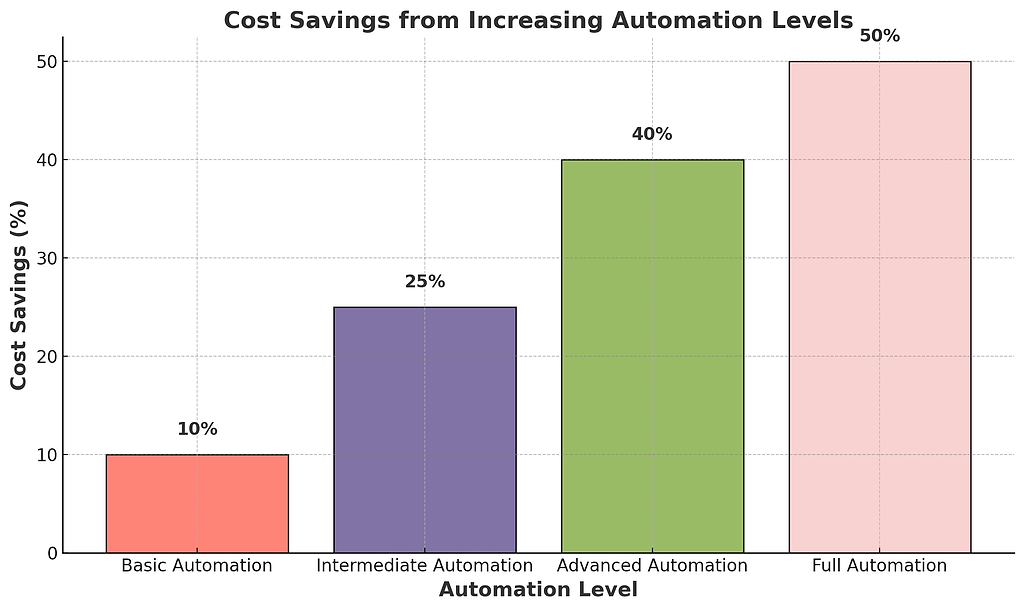“Quality is everyone’s responsibility.”
— W. Edwards Deming, a pioneer of the modern quality movement whose methods transformed manufacturing and management practices worldwide
“Quality means doing it right when no one is looking.”
— Joseph Juran, one of the founders of quality management and author of the Juran Trilogy, a key framework for quality improvement
“Quality is free. It’s not a gift, but it’s free. The ‘unquality’ things are what cost money.”
— Philip B. Crosby, influential quality consultant and creator of the “Zero Defects” philosophy, a foundational concept in quality control
In today’s complex digital environment, quality assurance (QA) and quality control (QC) play critical, though distinct, roles in software delivery. QA focuses on building quality through process improvements and metrics, while QC detects and prevents defects to ensure product reliability. For organizations to mature from “Quality Initializing” (Level 1) to “Quality Expert” (Level 5), a holistic, shift-left approach is essential, where all team members—not just the QA team—share responsibility for quality.
“Effective quality assurance today requires more than just defect detection; it requires a culture of quality embedded throughout the development lifecycle, with QA playing a proactive role in preventing issues before they occur.”
— Gartner
The Diagnostic Portfolio Assessment: A Key to QA Maturity

A Diagnostic Portfolio Assessment (DPA) offers a structured approach to evaluating and improving your organization’s QA capabilities across essential dimensions:
• QA Methodologies: Ensures alignment with organizational goals.
• Processes and Practices: Examines workflows to support quality objectives.
• Toolsets and Automation: Assesses the effectiveness of testing tools and automation frameworks.
• Cybersecurity and Compliance: Verifies alignment with regulatory and security standards.
This approach allows organizations to establish a clear baseline, benchmark their capabilities, and set goals for targeted growth.
“The most mature organizations today use QA assessments not just to improve quality but to drive strategic alignment across the entire business.”
— Tom Murphy, Research Director at Gartner
Case Study Insights: How Maturity Assessments Transform Organizations
QA Consultants’ work with major enterprises highlights the transformative potential of maturity assessments:
- Healthcare Sector: In collaboration with a digital health company, QA Consultants implemented a robust QA process to meet stringent FDA compliance requirements. By leveraging test automation and performance testing, the client improved time-to-market by 30% and met all regulatory standards.
- Financial Services: QA Consultants introduced a managed services model for a large U.S. life insurer, optimizing load testing and reducing claim processing times from 17 seconds to under one second. This Agile approach significantly improved both performance and customer satisfaction.
- Retail Sector: Canadian Tire Bank engaged QA Consultants to develop a custom automation framework, which increased QA efficiency by 20% and led to a 20% reduction in QA costs. The framework allowed for real-time defect tracking and faster release cycles.
Maturity Levels in QA
Organizations progress through five maturity levels, each representing increased quality integration, efficiency, and cost savings:
Level 1: Quality Agnostic
- Characteristics: Limited focus on quality; manual processes.
- Challenges: High risk of human error, no cybersecurity.
- Savings Potential: None.
- Budget Overrun: 50-75%.
Level 2: Quality Initializing
- Characteristics: Initial focus on quality, introducing basic automation.
- Challenges: Limited Agile/DevOps integration.
- Savings Potential: 5-10%.
- Budget Overrun: 25-50%.
Level 3: Quality Conscious
- Characteristics: Basic Agile and DevOps integration, AI-driven tools.
- Challenges: Requires greater cross-team collaboration.
- Savings Potential: 25%+.
Level 4: Quality Savvy
- Characteristics: Optimized resources, cybersecurity embedded.
- Challenges: High degree of cross-departmental alignment.
- Savings Potential: 40%+.
Level 5: Quality Expert
- Characteristics: Advanced AI, full automation, risk-based testing.
- Challenges: Complex but effective quality and security integration.
- Savings Potential: 50%+.
“Reaching Level 5 maturity allows organizations to embed quality as a core function, yielding lower costs and improving reliability and customer satisfaction.”
— Theresa Lanowitz, Founder, and Head of Research at voke inc.
Achieving QA Maturity: The Timeline
The journey to higher QA maturity is a structured one. QA Consultants’ case studies highlight common timeframes for achieving these milestones:
- 3-6 Months: Achieve Level 2 by establishing foundational QA processes.
- 6-9 Months: Reach Level 3, realizing up to 25% savings.
- 12-18 Months: Achieve Level 4 by centralizing best practices, saving 40%+.
- 18-24 Months: Reach Level 5 maturity, fully integrating DevOps, AI, and automation.
Example: Avesis, a health technology client, partnered with QA Consultants to ensure data integrity across cloud platforms. The multi-phase testing solution saved 80% of testing time and mitigated risks, positioning Avesis for sustainable success .
Overcoming QA Maturity Challenges
Advancing QA maturity requires addressing common challenges, including:
- Resource Constraints: Limited time, budget, and expertise can slow progress.
- Resistance to Change: Clear communication of QA maturity benefits helps drive team alignment.
- Data Overload: Focus on actionable, relevant data to avoid overwhelming teams.
“In our experience, addressing these pain points effectively is key to unlocking full QA potential. We help our clients overcome these barriers and advance maturity in tangible ways.”
— Alex Rodov, CEO of QA Consultants
Benefits of a Quality Maturity Assessment
Conducting a QA maturity assessment enables data-driven decisions, reveals areas for improvement, and aligns quality goals with organizational objectives.
1. Improved Decision-Making
Maturity assessments provide actionable insights, enabling organizations to prioritize changes that will drive the greatest value.
2. Identification of Growth Opportunities
QA maturity assessments pinpoint where to improve processes, adopt new technologies, and enhance cross-functional collaboration.
3. Strategic Alignment
Ensuring QA practices align with broader organizational goals makes quality a shared, cross-functional objective.
“Modern maturity assessments ensure that quality functions are strategically aligned with enterprise objectives, creating cohesion across teams and functions.”
— Rajeev Ranjan, Principal Analyst at IDC
Taking Action: Building on Your QA Maturity Assessment
Following a QA maturity assessment, QA Consultants recommends:
- Implementing Best Practices: Adopt industry-standard QA methodologies and automated tools.
- Upskilling Teams: Invest in training and staff augmentation as necessary.
- Measuring Impact: Use metrics to monitor improvements in cost and productivity.
- Promoting a TCoE: Highlight the benefits of a Testing Center of Excellence (TCoE) internally to foster support.
“A clear roadmap and consistent evaluation are essential in QA transformations. Each step toward maturity enhances quality and delivers measurable results.”
— Alex Rodov
Client Testimonials
“QA Consultants helped us establish a standardized, efficient testing framework, reducing budget overrun by 35% and advancing us to Quality Savvy.”
— Chief Information Officer, Financial Services
“QA Consultants guided us in streamlining our testing processes, achieving over 25% savings and improved time-to-market.”
— CTO, Leading Retail Company
Next Steps
What’s next? After a company maturity assessment is completed and the structure is implemented, we devise a business-driven test management approach, including flexible and agile testing techniques.

Depending on the results, QA Consultants can:
- Apply industry best practices, methodologies, and knowledge of automated tools, frameworks, and accelerators. This involves the setup and maintenance of the hardware, software and testing services infrastructure including test environments, and tools.
- Evaluate existing resources and create a plan for additional staff and skillsets. Train testing teams and mentor the entire organization to apply process and organizational changes
- Measure the impact on test maturity after transformation using business-relevant parameters, such as cost and productivity
- Quantify the success of the TCoE against metrics and promote TCoE advantages internally
- Improve quality assurance processes through continuous innovation, short evaluation cycles, and realistic ‘how to’ recommendations for every phase of the transition
We help you mature your quality.
Every company environment is unique and requires an individual answer. At QA Consultants, our projects can range from a few hours (for on-demand needs) to multi-year sourcing arrangements. However, most of these engagements start with one or more advisory services.
Advisory services at QA Consultants are those that have a fixed duration and confirmed end date. Our services often have a deliverable that improves processes and teams. These are traditional consulting engagements that include time from our executive leadership and senior professional services teams.
Most advisory services are delivered under time and materials engagement models. This allows QA Consultants to be efficient and reduce the time needed. Most of these projects relate to some degree of assessment. When material, data, and resources are readily available, these projects can move smoothly and under budget.
Unlock your organization’s full potential
with QA Consultants maturity assessment. Identify strengths and weaknesses for strategic improvement. Contact us today to start your maturity assessment journey.
